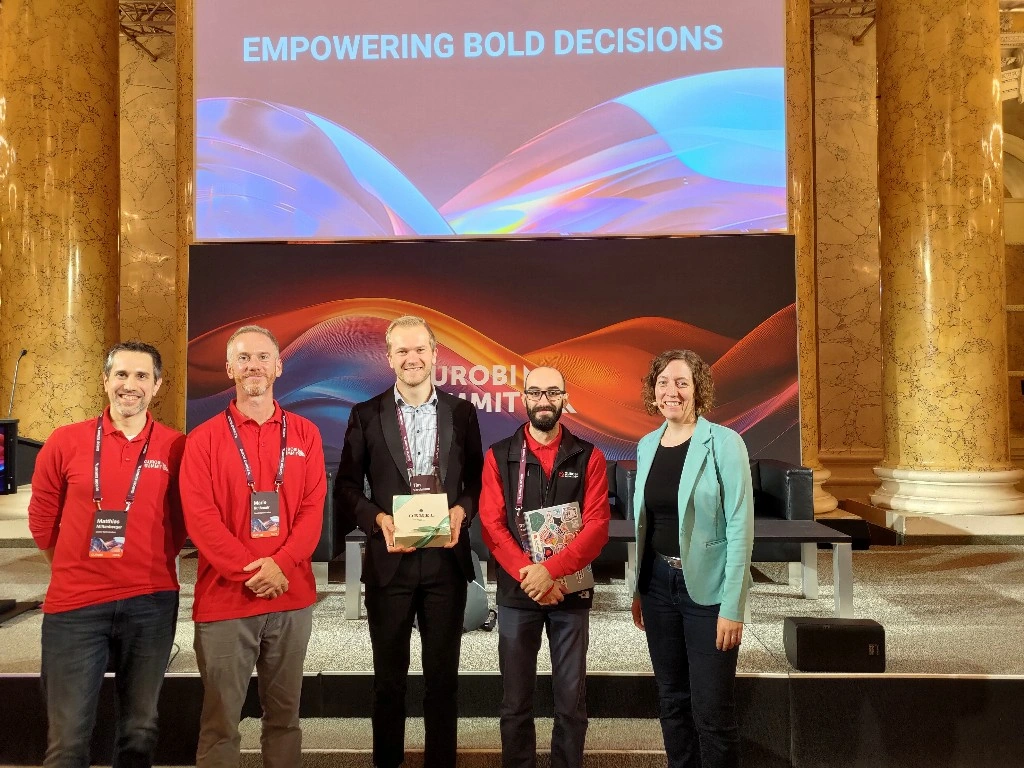by Tim Varelmann
This success story is shared with Dryft’s permission.
- 7-digit reduction in projected inventory value (early test results), while still increasing the average service level
- Optimization approach is now wrapped in an API to serve end users
- Leveraged Seeker by InsideOpt to handle uncertainty at scale
- Delivered a compelling PoC in under 3 weeks, despite obstacles
Dryft is an early-stage startup based in San Francisco. Dryft builds AI agents that capture complexity, absorb tribal knowledge, and—paired with mathematical optimization— make decisions with human intuition at machine scale. This way, they automate complex human decisions in manufacturing operations. In late 2024, Dryft approached Bluebird Optimization to collaborate on the logic of a new capability for their platform: dispatch parameter optimization under uncertainty. Two of their clients had already adopted the first AI agent, and they were eager to explore the next big feature.
We kicked off with tight timelines. Just three weeks in, we were scheduled to present a proof of concept (PoC) to the two prospective early adopters. We mapped out three tiers of goals: minimal, realistic, and ambitious. Progress was smooth... until I got sidelined by a seasonal cold midway through the second week.
We could continue to work on the PoC in the third week. We finished the minimum requirement deliverables with a 16-hour Saturday, and had all indispensable things implemented:
- Capital cost
- Storage cost
- Order costs (for order-quantity-independent effort)
- Penalties for stockouts
- Simulation of inventory trajectories under various planning strategies
With 1.5 days left, we packaged the results into clear visualizations and a compelling pitch. The prospective clients were impressed, our project had had a successful start.

We wanted to close the gap between our minimal PoC and the requirements in the 'realistic' tier of requirements. Also, we had gathered a bunch of desirable and sensible additional requirements over the course of the first 3 weeks. So we expanded the scope:
- Supporting bulk discounts
- Handling items with both continuous (e.g. kg) and discrete (e.g. pieces) units
- Modeling uncertainty realistically

We had good historical data to describe demand patterns. But using standard open-source solvers, we ran into a wall. The methods were either overly simplistic or demanded crystal-ball-like foresight that doesn’t exist in practice. For real-world planning, uncertainty isn't just a nuisance—it’s the whole point. And our first modeling attempts made it very clear that proper consideration of the uncertainty of demand and its influence on the inventory trajectories would not be possible with open-source solvers.
To tackle this, we tested commercial solver options. While a classic MIP-based solver could technically model everything, the solve times didn’t scale well with uncertainty. Seeker by InsideOpt, a newcomer on the optimization scene, took a very different approach:
- It searches cleverly for high-quality solutions without proving they’re mathematically optimal
- Seeker scales well with stochastic programming
- The solver can be terminated after a pre-specified time, making runtimes deterministic
- And (with proper models and computation time) it delivers results that perform robustly, even when demand deviates from expectations
That meant we had to reformulate our entire model, which is no small feat. But with hands-on support from InsideOpt, we made the leap quickly.
Today, the final optimization model is being wrapped into a dedicated API endpoint to support Dryft’s clients directly.
- Preliminary tests show potential to reduce inventory value by seven figures
- At the same time, we expect an average service level improvement of 5% or more
- These results hold up even when demand behaves unpredictably
Dryft CTO Leonie Freisinger summarizes the impact that our collaboration has had for her:
“Over the course of the project, I could always tell you about the challenges we faced at the client site. You would understand them and directly answer with potential strategies and convincing explanations for what the tradeoffs between our options were. That streamlined our decision making immensely.”
We also had support from the Dryft team who helped make the impressive results accessible to the users.

What made this project special was not just the math or the tech — it was the trust, speed, and shared ownership in solving a hard real-world problem. We didn’t just check boxes; we challenged assumptions, adapted quickly, and delivered something both cutting-edge and practical.
For any questions about this project or how to apply optimization to your challenge, please reach out :)
Also, make sure to stay on top of happenings in the optimization world by subscribing to Bluebird Briefings!


